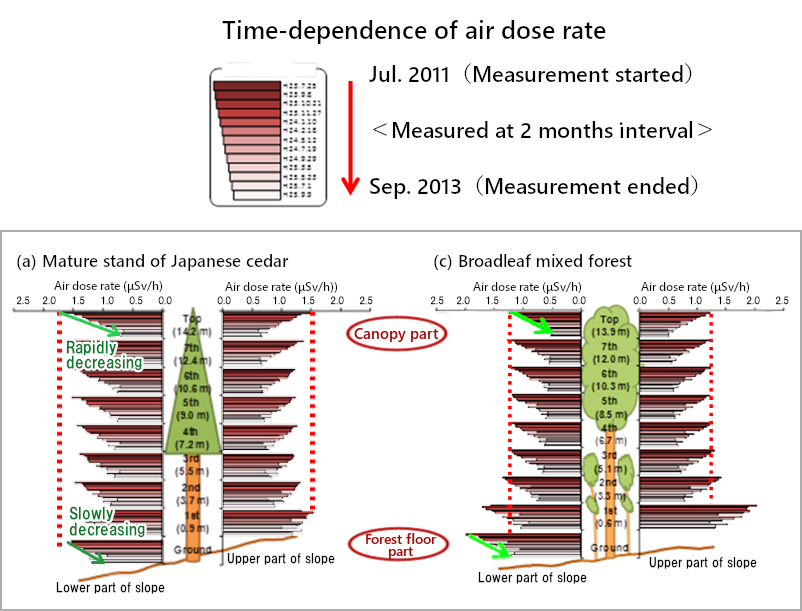Radioactivity Dynamics in forests
(2015)
QHow do air dose rates in forests change with time?
AAir dose rates in forests have been investigated in Kawamata Town, Fukushima Prefecture. Following results were obtained.
- In Japanese cedar (evergreen) forests, air dose rates near canopies were higher than those near forest floors just after the accident.
- The air dose rates near canopies decreased rapidly with time. Compared with canopies, the decreasing speeds of air dose rates near forest floors were low. Therefore, it is considered that this difference is the effect of radioactive cesium migration from canopy to forest floor.
- The rate of decrease in air dose rates at ground surface was almost same as that calculated from physical decay.

Fig.1 Vertical distribution of air dose rate in the forest
Reference:Report on the project entrusted by Nuclear Regulatory Agency “FY 2013 Establishment of Methods for Understanding Long-term Effects of Radioactive Materials Released by the accident of the Fukushima Daiichi Nuclear Power Station, TEPCO”.
Related articles
- I heard most of the forests would not be decontaminated. Does cesium remain in the forests?
- Does the concentration of radioactive cesium deposited in mountain forests vary by altitude and location?
- Do sediment with high radioactive cesium concentration continue to be deposited on river bottoms?
- Is there a continuous input of cesium contamination to rivers from forests?
- How much did the amount or the concentration of Cs released to river water by forest fire? How did them change by time?
